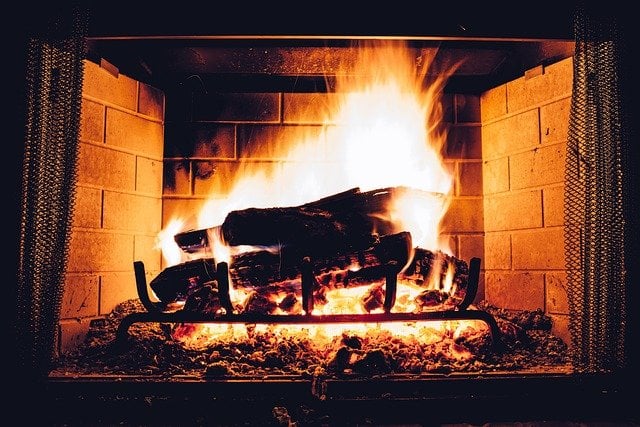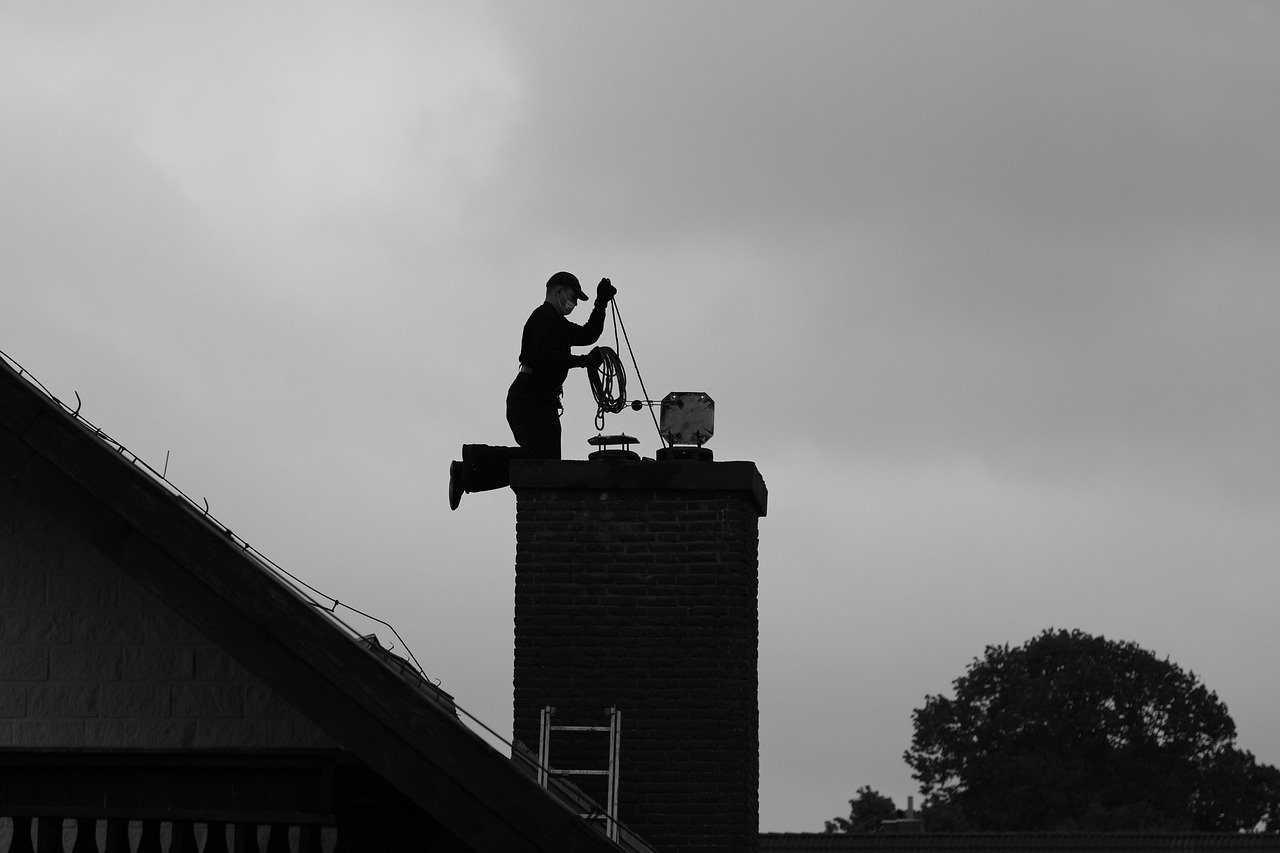There can be a lot to take into account when going over a newly purchased home after you get through all the transactional details.
The safety of your fireplace and chimney is important to check up on regularly and before you ever start a fire in a new fireplace for the first time.
Here are some tips you can use to ensure your fireplace and chimney is safe to use to keep your next cozy winter fire anxiety-free.
How to Inspect Your Chimney Yourself
It is never good to assume the previous owner kept the chimney up to snuff. Not knowing if your chimney is safe to use can be a serious matter of safety.
When winterizing your home it is more important than ever to inspect your chimney and make sure it is ready for another year of use.
Annual chimney inspections are recommended for your home’s chimney every year before use. You need to add this to your home inspection checklist.
You can do your own chimney inspections with these simple steps, but this should not substitute for having a professional chimney sweep.
If you note any hazards during your self-inspection, do not hesitate to ask someone for help before you light a fire.
Inspect From Inside the House
The first step is to take a look at the chimney from inside the home.
Inspect the mortar between the stones or bricks to make sure there are no cracks or openings. These can create a channel for the flame to get behind or around the chimney and cause damage to the wall interior of the home.
Another place that can be fairly easy is to check the smoke shelf located just above the damper. Smoke shelves are commonplace for debris falling down into the chimney. Even animals are known to make nests inside smoke shelves.
Either of these situations can provide fuel for a fire to start inside the chimney and damage the flue.
To check the inside of your chimney, open the damper. Wear a pair of gloves and reach your hand up into the chimney and feel along the smoke shelf.
Be sure to note the feeling of any build-up or debris. Build-up and debris is a sign you need a chimney sweep to come to your home.
Check the Exterior – Roof & Chimney
The next step in self-inspecting your chimney is to go outside! Inspect the exterior of your home – specifically the chimney and roof.
Before getting on the roof, check for any cracks along the chimney. Look to see if there is any lean or tilt to the entire chimney’s structural base.

Once all of the proper safety procedures have been followed and you are safely on your roof, make sure that your chimney has a cap.
Chimney caps help keep rain from getting into the home and keep sparks from flying out of the chimney.
Inspect the flashing around the chimney where it ties into the roofing system with a flashlight. Roof flashing leaks are common and deterioration can cause cracks or openings.
Look Down the Chimney Flue
The third step to inspecting your chimney is to remove the chimney cap and look down the flue with a flashlight.
Here you will be able to determine the level of creosote build-up along the chimney flue.
The Dangers of Creosote Build-Up
Creosote build-up can be extremely dangerous. Using a professional chimney sweep is your best option for cleaning creosote from a chimney. Since it is a messy job it’s best left to the pros
According to the National Fire Protection Association (NFPA), creosote is the leading cause of house fires.
Creosote is created when wood burns and smoke moves up the chimney and out of the home. The condensation from the rising heat sticks the residue to the inside of the chimney.
Creosote buildup increases when the air supply is restricted in the chimney, unseasoned wood is used to make a fire, and when the chimney temperature is cooler than normal.
Too much creosote buildup can cause chimney fires and these low-burning fires can go undetected until they spread. Scheduling a clean-up with a chimney sweep could be a good addition to your spring cleaning list!
What about Gas Fireplaces?
If you do not have a wood-burning fireplace and are curious if these procedures should be taken with a gas fireplace. Look no further, a gas fireplace does not produce creosote like a wood-burning fire.
However, they do still need annual cleaning and check-up.
A chimney sweeping in your gas fireplace will help remove items like bird’s nests, animals, and any debris that may have gotten trapped in there as well as any potential soot.
3 Tips for Maintaining Your Fireplace
There are a few tips to help maintain the functionality of your fireplace.

#1: Have a Working Damper
Making sure your chimney has proper and sufficient airflow is very important when it comes to reducing creosote buildup.
Make sure the damper is able to open fully and is working properly, allowing the heated smoke to travel quickly out of the chimney.
The longer the smoke is trapped in the chimney the more creosote can build up. If your damper is working properly this won’t be as much of an issue.
#2: Burn the Right Wood
You can maintain your fireplace by burning the right wood inside it.
One tip is to use properly seasoned wood. It is recommended that the wood be seasoned for at least a year to reduce the amount of moisture in it.
Making sure you do not overfill the fireplace with wood is another good way to reduce the build-up.
On the other hand, deciduous trees or hardwoods tend to be better for making fires. Their hard dense wood burns hotter and lasts longer. They also produce less creosote. Some of the most desired varieties are oak, locust, and hickory.
It is also important to know which wood to burn and which ones to stay away from.
As a general rule, most coniferous trees, the types of trees that have needles, are not well-suited for use in your fireplace. These trees tend to provide less fuel for the fire and usually produce less heat.
You can certainly burn it, but the wood from coniferous trees also contains pitch and is notorious for creating creosote buildup when it burns.
Hemlocks are among the top of the list for worst woods to burn.
#3: Get an Annual Chimney Inspection
There are a lot of things you as a homeowner can do to help ensure your fireplace is working properly and is safe to use. We still strongly recommend that you schedule a chimney inspection with a professional at least once a year.
This can keep you safely on the ground and give you the peace of mind that everything is in good working order to keep you and your loved ones safe during the winter months.
Keep your home cozy and safe this winter. Find more fireplace safety tips provided by the U.S. Consumer Product Safety Commission.


